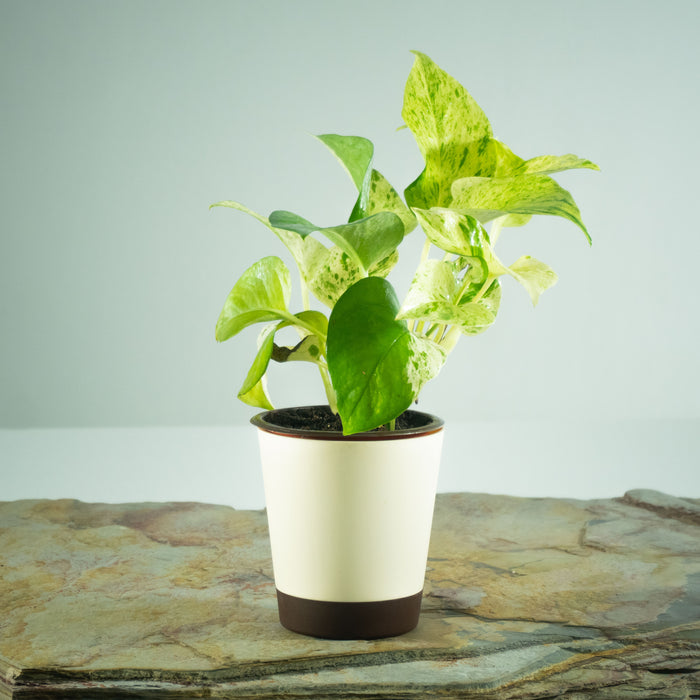
Common Name: Golden Devil's Ivy, Scindapsus Golden, Golden pothos, Ceylon creeper, Hunter's robe, Ivy arum, Solomon Islands ivy
Botanical Name: Epipremnum aureum goldii
Other names: Golden Money plant
Origin: Australia, Southeast Asia
What's special?
Golden money plant, or Golden Devil’s Ivy, is the most classic beauty from money plant family. This low maintenance climbing plant, with its large green & yellow heart shaped leaves, is suitable for both indoor and outdoor locations. Like other money plants, this one too is supposed to bring wealth, health & prosperity to the house as well as reduce stress & anxiety level of the members. Besides all this, Golden money plant is great at filtering airborne pollutants and improving indoor air quality. This beloved plant, if properly arranged for a trailing growth, can fill any space to give a mesmerizing tropical feel.
Growth Habits: Money plants at home can easily grow up to 10 - 15 ft. long
Soil Requirement: Loamy well drained soil with cocopeat
Watering Schedule: Twice a week
Light condition: bright indirect sunlight or partial shade
Ideal Temperature: Anywhere between 15 - 32 degree Celsius
Repotting instructions: Do not repot the plant for a minimum of 2 weeks after receiving it. Once you see the plant growing well, you can repot it in a slightly larger container.
Suitable Locations: Try to keep this plant at locations like Office desk, bedroom, Balcony, windowsill, hanging baskets, etc.
Maintenance: Low
Caring Tips:
• This plant grows extremely fast, and branches can spread to any directions. You will need to trim this plant regularly if you have to control its growth. • Too much heat can damage the leaves of this plant. So, try to keep it at a place where it can receive indirect sunlight. • As a simple rule, watering must be done regularly in the summer and should be reduced during winter and rainy season. • Keep a track of dead, infected or damaged plant parts. Discard them whenever required. • You can tie the stems or use ropes or wires to support the growth of the plant.



